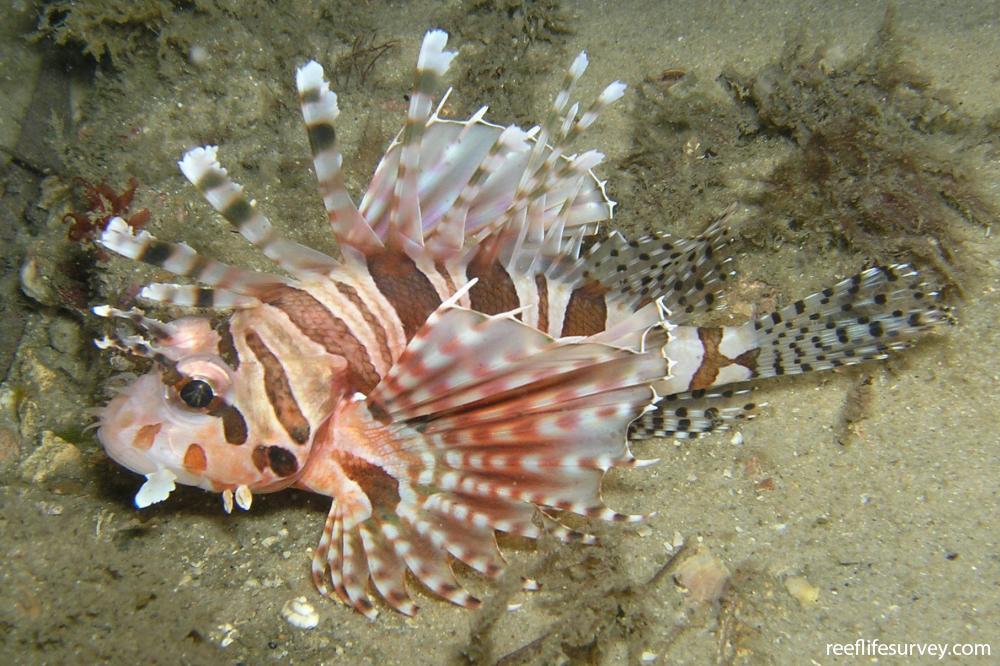Dendrochirus zebra
Zebra lionfishSimilar Species
Same Genus
Distribution
Temperate Australasia, Tropical Indo-Pacific
Description
Pair of large white spots on tail base and relatively short pectoral fin rays which in adults don't extend much further than the membrane between them. Transparent anal, tail and soft dorsal fins with small brown spots on rays. 6 Red to brown bands on body, inter-spaced by white bands which are each bisected by a narrow dark dark bar. Pterois volitans (Common Lionfish) has similar banded pattern, but lacks white spots on tail base and has longer pectoral fin rays.
Information
Max Size: 25 cm
Sea Temperature Range: 16.2-32.1°C
Depth: 1-80m
Habitat Generalization Index: 2.33
Also referred to as the SGI (Species Generalisation Index), this describes the habitat niche breadth of the species. Species with values less than 15 are found in a relatively narrow range of reef habitat types (specialists), while those over 25 may be found on most hard substrates within their range (generalists). Learn more here.
Conservation and Rarity
IUCN Status: Not Evaluated
Occurrence: Infrequent (3.2% of sites)
Occurrence describes how often the species is found on surveys within its distribution. It is calculated as the % of reef sites surveyed by RLS divers across all the ecoregions in which the species has been observed
Abundance: Solitary (1 per transect)
Abundance is calculated as the average number of individuals recorded per RLS transect, where present.
Edit by: Andrew Green




















